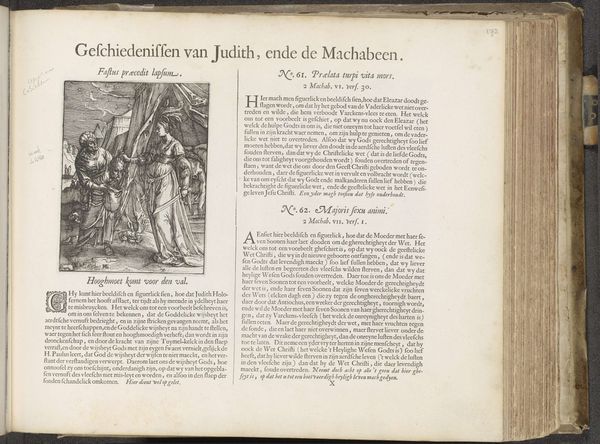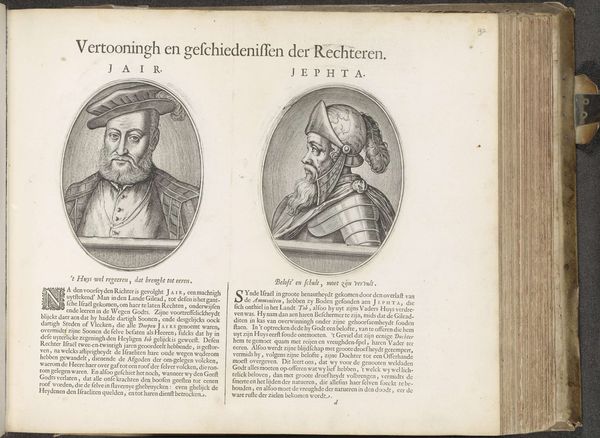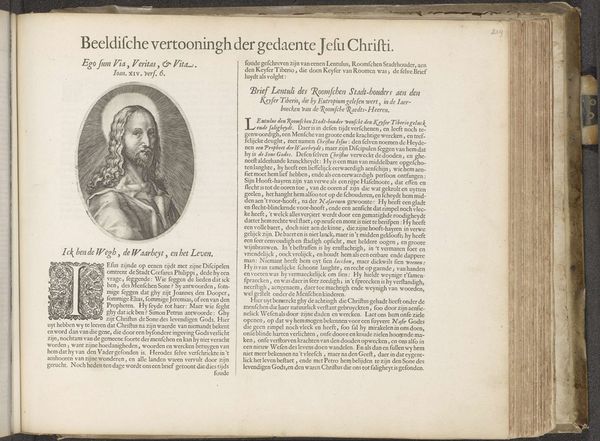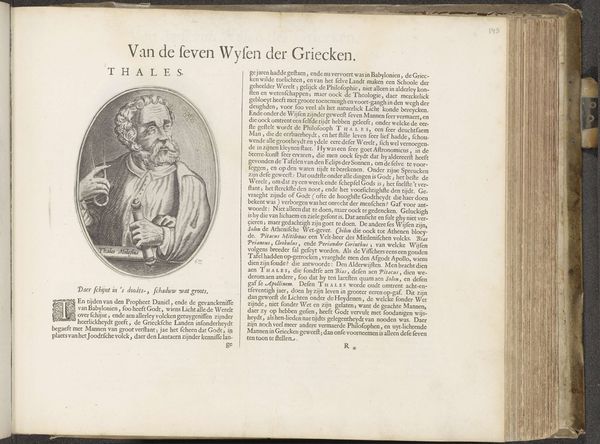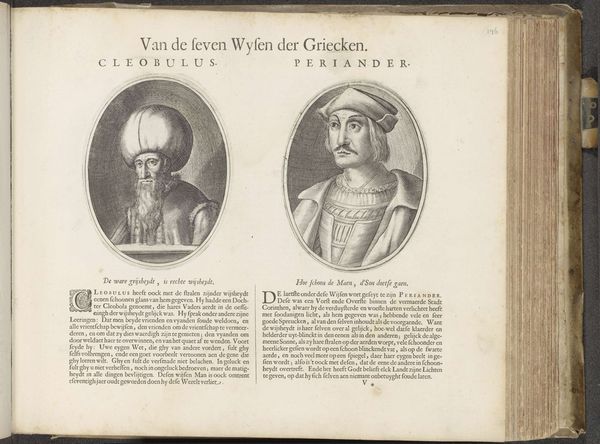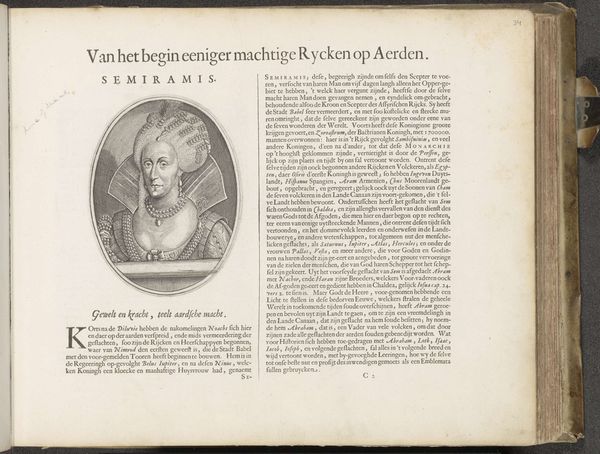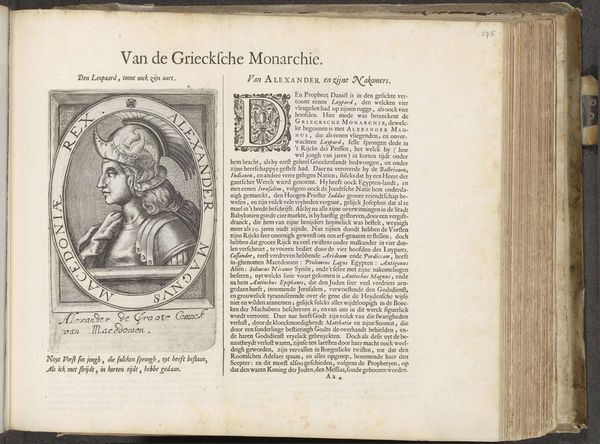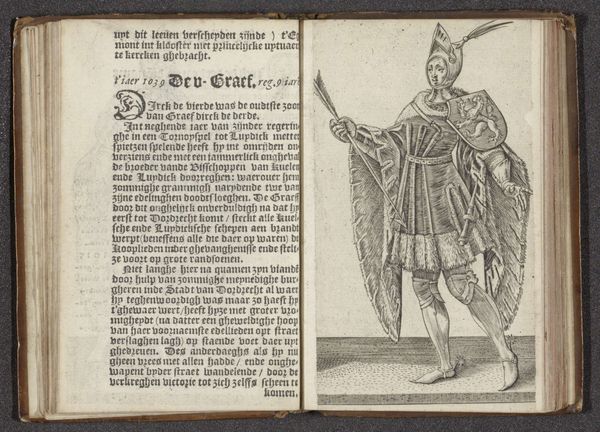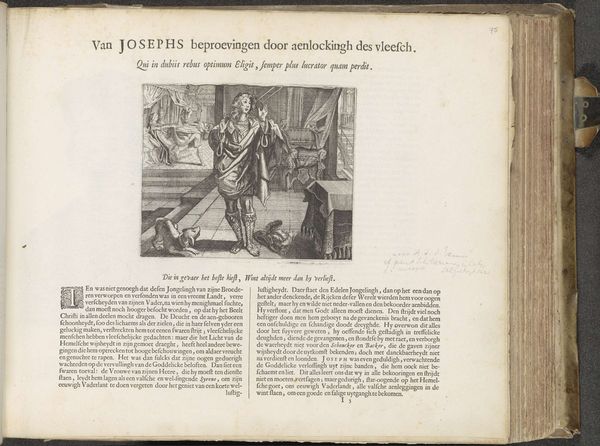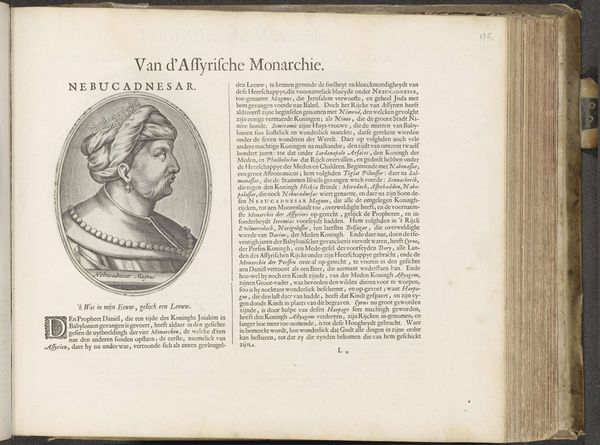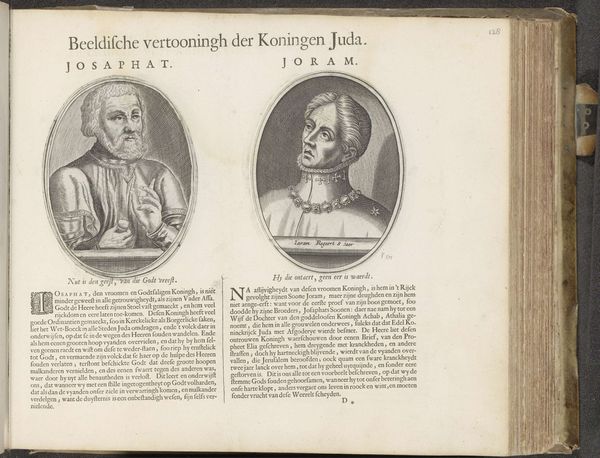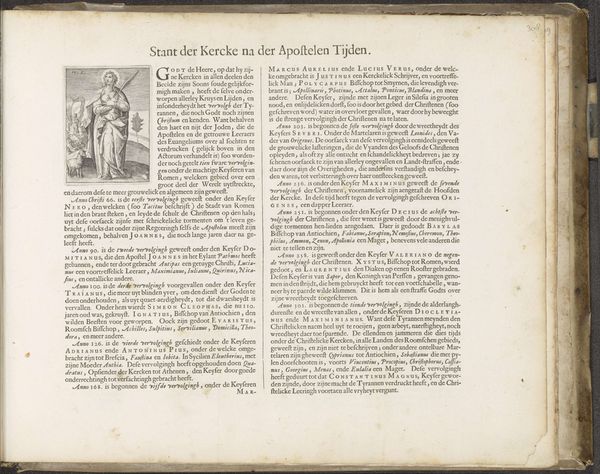
print, engraving
#
portrait
#
baroque
#
dutch-golden-age
# print
#
figuration
#
coloured pencil
#
engraving
Dimensions: height 135 mm, width 103 mm, height 294 mm, width 370 mm
Copyright: Rijks Museum: Open Domain
Editor: Here we have "Portret van Jozua," possibly created between 1610 and 1654, artist unknown, currently housed in the Rijksmuseum. It's an engraving – a print from the Dutch Golden Age. What immediately strikes me is the serious, almost solemn expression on Joshua’s face. What do you see in this piece? Curator: Beyond the individual portrait, I see the political work of imagery at play. This print participates in the construction of national identity. Prints like this were instrumental in shaping how the Dutch Republic understood its place in religious and political history. Editor: That’s interesting. So, you’re saying it's more than just a portrait? Curator: Exactly. Consider the subject: Joshua, a leader who conquered the Promised Land. In the context of the Dutch Revolt against Spanish rule, figures like Joshua offered a powerful parallel. They visually articulated a sense of divine right and national destiny during their period. This wasn’t simply about historical accuracy, but about creating a persuasive and politically potent narrative. Editor: So, displaying a piece like this at the Rijksmuseum is interesting, given it could also have some kind of agenda. What is the effect of displaying the artwork now? Curator: Absolutely, the modern presentation still evokes a sense of the public role of the visual, as an important form to express the values of state. Editor: I never would have considered the historical implications! This makes me rethink how seemingly straightforward portraits can actually function on a much deeper, political level. Curator: Precisely. And thinking about art in this context illuminates the relationship between representation, power, and social memory.
Comments
No comments
Be the first to comment and join the conversation on the ultimate creative platform.

